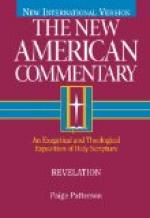Delitzsch, in his New Investigations into the Origin and Plan of the Canonical Gospels, tries to show that Matthew is constructed on the plan of the Pentateuch. The analogy is somewhat strained, but there are some striking points of correspondence. He regards Matthew i. to ii. 15 as answering to Genesis. It begins with the ‘genesis of Jesus,’ and, as the Old Testament book ends with the migration of Israel to Egypt, so this section of the Gospel ends with the flight of the Holy Family to the same land. The section from ii. 15 to the end of the Sermon on the Mount answers to Exodus, and here the parallels are striking. The murder of the innocents at Bethlehem by Herod answers to Pharaoh’s slaughter of Hebrew children; the Exodus, to the return to Nazareth; the call of Moses at the bush, to the baptism of Jesus; the forty years in the wilderness, to the forty days’ desert hunger and temptation; and the giving of the law from Sinai, to the Sermon on the Mount, which contains the new law for the kingdom of God. Without supposing that the evangelist moulded his Gospel on the plan of the Pentateuch, we cannot but see that there is a real parallel between the beginnings of the national life of Israel and the commencement of the life of Christ. Our present text brings this parallel into great prominence. It is divided into three sections, each of which has for its centre an Old Testament prophecy.
I. We have first the flight into Egypt and the prophecy fulfilled therein. The appearance of the angel seems to have followed immediately on the departure of the Magi. They were succeeded by a loftier visitor from a more distant land, coming to lay richer gifts and a more absolute homage at the infant’s feet. The angel of the Lord, who had already eased Joseph’s honest and troubled heart by disclosing the secret of Mary’s child, comes again. To Mary he had appeared waking; her meek eyes could




